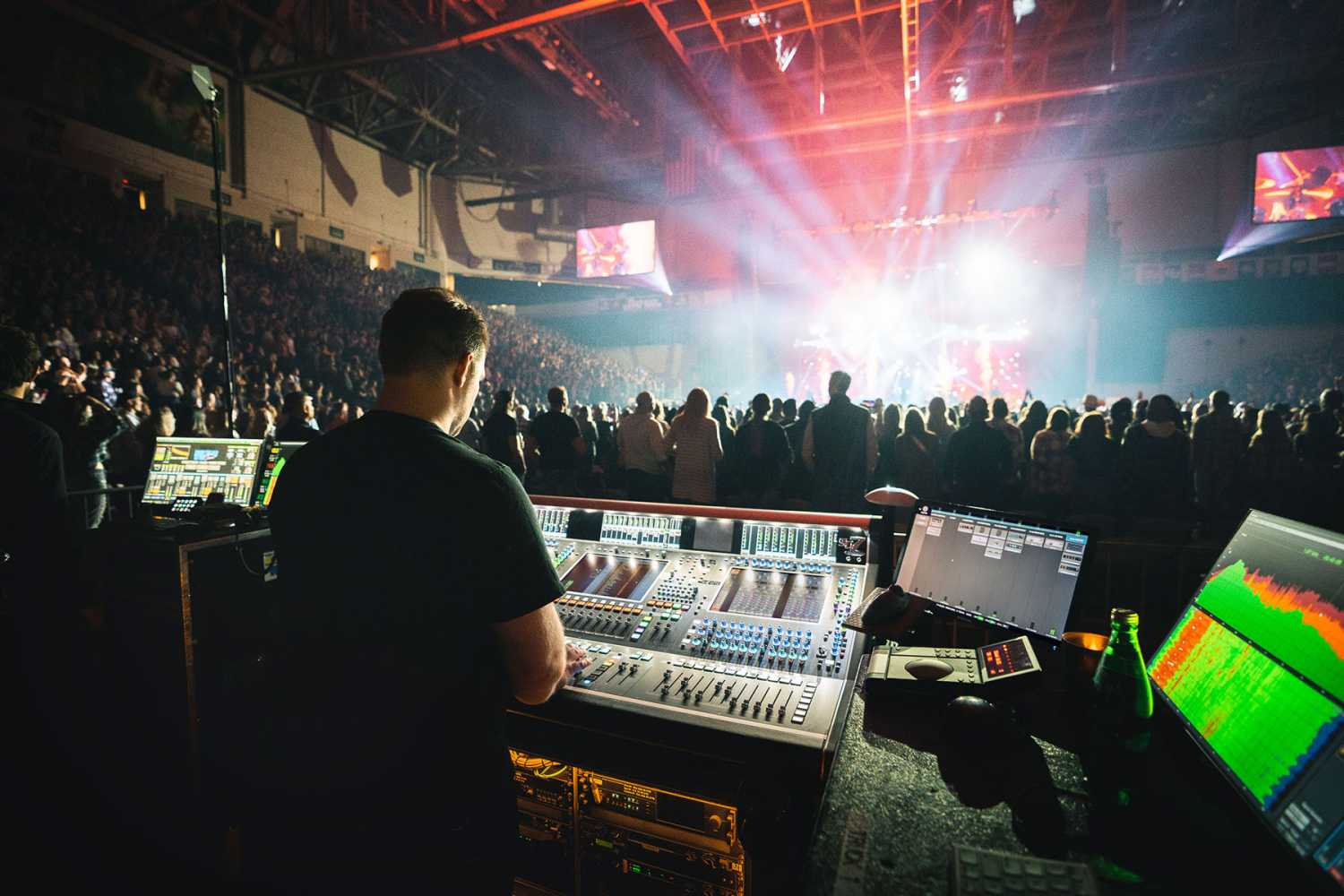Quantum7s keep things simple for Thomas Rhett
- Details

The only way to accomplish that, according to the audio engineers, was via DiGiCo’s Quantum7 console - times two. Rented through Nashville-based Spectrum Sound, the identical control desks reportedly made all the difference in terms of being able to reliably execute a complicated show night after night.
The pairing of the two Quantum7 desks came about when Nicholson, who joined Rhett’s team in 2019, was asked to take over both the artist’s audio monitoring, which he had initially been doing, and the monitor mix for the entire band. Until then, show monitoring needs had been mixed on a pair of DiGiCo SD5 consoles. “Once I took over the entire monitor mix, I realised I’d need a lot more processing power to manage it,” he says.
“That’s when we both made the switch to the Quantum7,” interjects Smith, adding an SD-Rack, two SD-MiNi Racks, and four Orange Boxes - one for keyboards and electronic drums, one for tracks, one for guitar modeling amps, and one for FOH outboard gear - all shared on an Optocore loop, to the list. Nicholson continues, “There’s a huge advantage to having identical consoles and having all of this compatible technology on the same network.”
Nicholson estimated that he was applying as many as 85 distinct configurations of the Quantum7’s Nodal Processing feature just to Rhett’s IEMs, including various multiband compression and dynamic EQ settings. This extreme level of exactness allowed him to precisely fit other elements in the monitor mix around the vocalist’s mix, especially instruments that came near the vocal frequency ranges, such as keyboard, guitars, and backup singers.
“Nodal Processing allows me to apply this level of processing solely to TR’s mix” he says. “I’m able to carve out a space, in terms of both frequency spectrum and dynamics, for TR’s vocal without affecting the sounds everyone worked so hard to get during rehearsals in their own mixes.”
The console requirements for Smith, who has worked FOH for Rhett for four years, included DiGiCo’s flexible and powerful snapshot capabilities, as well as Quantum’s Mustard Processing. “With the front-of-house mix, I didn’t have the same reliance upon Nodal Processing as Jimmy needed, but I did rely heavily on other features that the Quantum7 offered,” he shares. “My goal in the mix is to bring the album to the live show. There was a lot of time dedicated to dialling in sounds with the band to recreate the sound of the record for our fans to experience in a live setting.”
















